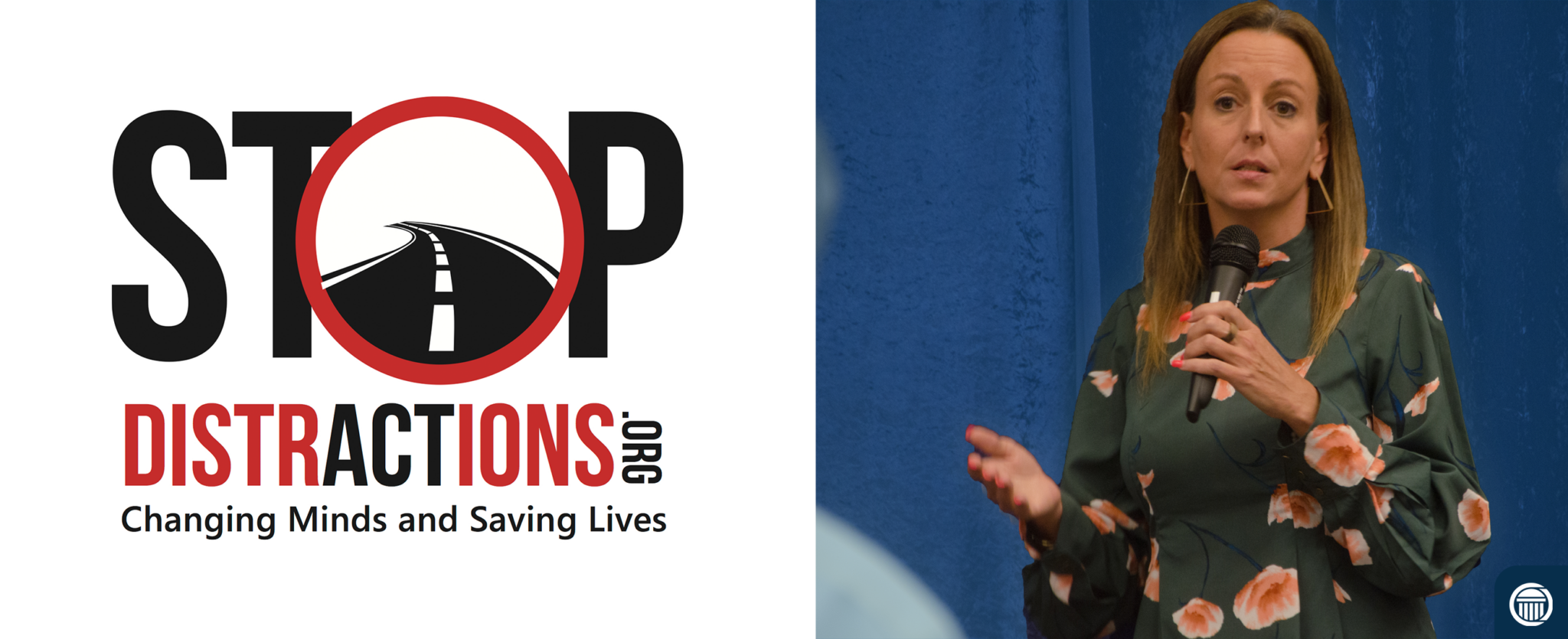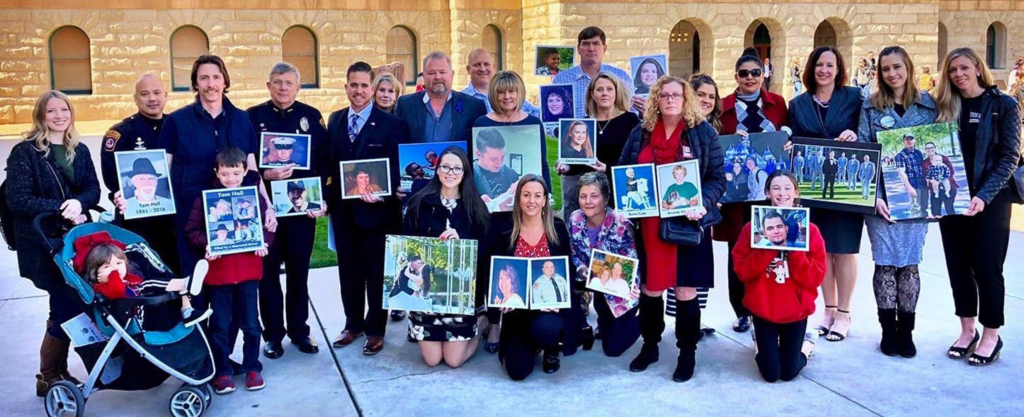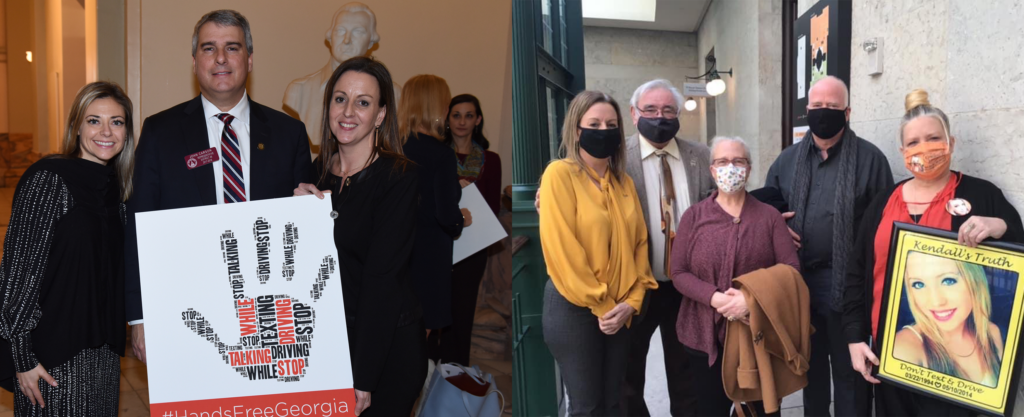How Stop Distractions is working to make distracted driving a national priority

“It is no longer a matter of if this is going to happen to someone you love, it’s when. If it hasn’t already.”
Jennifer Smith ends her distracted driving presentations with that quote. Jennifer is the co-founder of Stop Distractions, a safe driving organization that fights distracted driving by focusing on education and awareness, law enforcement and policy, and technology and engineering.
For 15 years, she has educated parents, students, and legislators on the dangers of distracted driving and how we can all be part of the solution. She spends her time speaking to lawmakers about the impact distraction has on the US and vows to keep fighting until it becomes a national priority.
We met with Jennifer to talk about her work fighting distracted driving over the past 15 years. Her personal story starts back in 2008 when she lost her mother in a distracted driving crash.
Our conversation has been edited for brevity and clarity.
CMT: Why did you start Stop Distractions?
Jennifer: On September 3rd, 2008, I received a call from my sister saying that our mom had been in a serious car crash. My mom was already at the hospital by the time I found out, and later that evening, she passed away.
My mom was the biggest volunteer for the Oklahoma Humane Society and was on her way back home after picking up cat food. She would go to this lake where there was a feral cat population and feed the cats every day. Even on Christmas, we would help her feed the cats because Santa had to come and see them. We joked around and called her the “crazy cat lady.”
The twenty-year-old driver who hit her just left the Goodwill store and called his neighbors to tell them there was a dresser they might want. He was a good person. He had been driving for less than a quarter mile. He had been in the car and on the phone for less than a minute. He didn’t see the light and never touched the breaks. He T-boned my mom on the driver’s side going about 45mph-50mph.
I was very fortunate in my case. When the driver got out of the car, he immediately admitted that he was on the phone. He said he was on the phone and never saw the light.
After losing my mom, I started to look for other families who had experienced this. I went back and looked up how Mothers Against Drunk Driving (MADD) had started and what they had done. I had lived in Texas and the MADD headquarters was right there in Texas, so I started reaching out to other families and other people who had experienced what I did. That’s how Stop Distractions started.
Families who wanted to create change, just as in the early days of MADD. We didn’t have to reinvent the wheel. We didn’t have to do anything new or different. We literally had to do what they did. It was just like the early days of drunk driving. But here we were again.
CMT: What is the mission of Stop Distractions?
Jennifer: Our mission is to use our personal experiences and stories to bring change. We focus on the three pillars of road safety: education and awareness, law enforcement and policy, and technology and engineering.
We use family’s personal experiences to make a difference in any way we can. In our communities and in our own families, we’re making sure everyone stays off the phones. All of those things working together is when you’re going to see results happen.
As the families that live through this, we are the data. That’s how I see the families. We are the data, the missing piece that can tie it all together and make sure we use that data to the best of our ability to bring change. Our goal is to end distracted driving.

CMT: How does telematics data help push the mission forward?
Jennifer: Everyone has always believed the family’s stories but having that data gives them the support that they need. They were always believed, but people think, “Well, that happened to you, that won’t happen to me,” or, “That doesn’t happen that often.”
Now, we’re no longer just telling our stories. We have proof behind us that can show this. We finally have the validation as families that this isn’t just happening to me and my family but to many other people.
You always hear about the big three, belts, booze, and speed. But if you ask any driver what the biggest threat on the road is, they say distracted driving. You ask law enforcement what is causing the most crashes and most will say distracted driving.
Without telematics, we don’t have the data to back that up, so states don’t get funding committed to these efforts. We have a problem passing laws because they say, “Oh well, only nine people died last year in this state.” Well, first of all, “only nine” is still horrible. And two, we know that number is so vastly underestimated.
They say 3,000-4,000 people are killed each year by distracted drivers in this entire country. We all know this is so underreported. We all know it’s much higher than that.
I have been the biggest telematics cheerleader ever since I first heard about it. It’s the missing piece that can help fix this problem. People have told us, “Well, we can’t prove it and we don’t know if they were on the phone or not.” Telematics data can actually measure that now. That’s been able to help us overcome the nonsense of “It’s not that big of a problem” or “Only so many people are affected.”
CMT: What are some of the biggest challenges you notice when trying to reduce distracted driving?
Jennifer: Understanding the power of words is crucial. The language we use in legislation can shape people’s understanding of the issue. I’ve seen how literally people take “texting and driving” laws while social media use while driving is still legal.
Many of these laws are written so it’s only illegal for you to text and drive or email and drive but scrolling on social media or chatting over FaceTime is perfectly legal. We need to change that. If we can break that behavior of knowing we cannot hold the phone to do anything, that can start a change in our culture.
There are also the challenges of reaching new audiences and the importance of making distracted driving “not cool” like society did with drunk driving. We always reach that one group in the road safety community, but we’ve got to get beyond that. We’ve got to make everyone think it’s not cool, just like society did with drunk driving.
We’re not quite there yet with distracted driving. Parents are driving distracted and it’s setting an example for their children. We’re not thinking about the examples we’re making to the younger generation. We all have to do better and be more conscious of that.
Drunk driving was not every single person, every single minute of every single day. Now, you drive around at five o’clock in the morning and people are on their phones. It’s the scale of the problem. My goal is to see distracted driving become a national priority.
CMT: What are the next steps for Stop Distractions?
Jennifer: My ultimate goal is to put my organization out of business. That means that distracted driving crashes will have stopped happening, risky driving behavior will have ended, and technological and infrastructure solutions will be in place, so we don’t have to work on this issue anymore.
We have the tools at our disposal to stop these crashes from happening. Insurers, telematics, and driving technologies can end distracted driving.
The families who have been impacted, I say they are the greatest people you wish you never met. They are admirable for their strength and we are all working together to get these laws passed. I am looking forward to the day when we get one of these laws passed — it takes everyone working together. All those pieces coming together would be the best gift ever.
